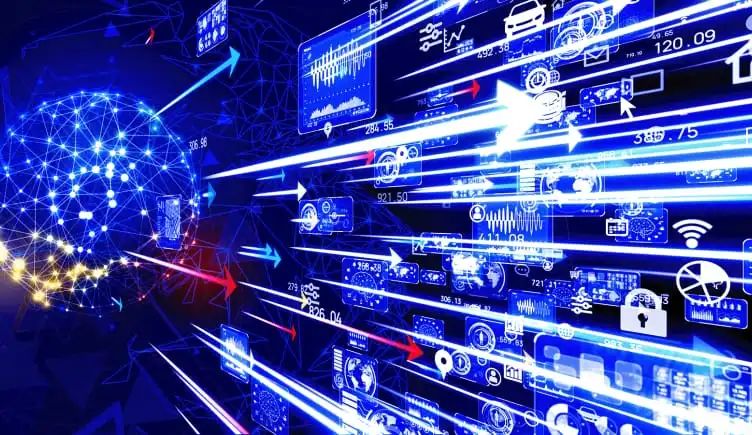Source: Edge Computing Community
Original Author: Bian Xiaoyuan
Edge AI enables devices to make faster and smarter decisions without needing to connect to the cloud or remote data centers.
Edge AI is the implementation of artificial intelligence in edge computing environments, allowing computation to occur near where data is generated rather than in centralized cloud computing facilities or remote data centers.
This localized processing allows devices to make decisions within milliseconds without needing an internet connection or cloud. Essentially, when a device generates data, the algorithms on board can immediately utilize that data.
Definition of Edge AI
Edge AI is the implementation of artificial intelligence in edge computing environments. This means that AI computations are performed at the edge of a given network, typically on the devices generating the data—such as cameras or cars—rather than in centralized cloud computing facilities or remote data centers.
For example, suppose you have a smart coffee maker that can produce customized drinks for each user and learn from their preferences over time, thanks to artificial intelligence. But unlike most smart devices, this coffee maker is not connected to the internet; all algorithms used for data processing are generated within the coffee maker itself—thanks to edge AI.
The use of this technology extends far beyond your kitchen countertop. Edge AI enables real-time analytics to be generated more securely, at higher speeds, and lower costs, making it an attractive alternative to cloud computing AI, with companies in industries such as manufacturing, healthcare, and energy leveraging this advantage.
What Is Edge AI?
In short, edge AI is the combination of edge computing and artificial intelligence. Therefore, to understand edge AI, one must first understand edge computing and artificial intelligence.
What Is Edge Computing?
Edge computing is a distributed computing framework that brings computation and data storage closer to the actual devices, rather than relying on remote data centers. By being close to the data and devices, edge computing can improve speed and response times.
Today, smart devices are ubiquitous. From watches on our wrists to cars in our garages, everything can perform autonomous computations and exchange data with other smart devices—a concept commonly referred to as the Internet of Things (IoT).
All this data flying back and forth puts a heavy strain on data centers. But edge computing aims to alleviate this burden by moving some processing closer to its origin. Thus, it can be said that the work is done not in the cloud but at the “edge.”
“Edge” simply refers to the devices in use. This can be a phone, camera, car, medical device, or television. Therefore, edge computing refers to computing that occurs within or near that device. And, like any other computer, edge computers are designed to process standard data.
What Is Artificial Intelligence?
Artificial intelligence is a branch of computer science that encompasses a wide range of technologies, including machine learning and deep learning. The goal of artificial intelligence is to build intelligent machines that can work and perform tasks typically accomplished by humans without human supervision.
In summary, edge AI is essentially about “doing the work and making decisions locally,” says Aaron Allsbrook, founder and CTO of edge AI startup ClearBlade. “It’s all about the rules. It’s processing, it’s collecting data, it’s understanding data—not in large servers or the cloud, but in your home, at work or job sites, or in parking lots,” he told Built In. “It’s about moving different mathematical algorithms and running those predictions at the edge.
Advantages of Edge AI
Cost-Effective Edge AI
Suppose you have a small security camera that you want to perform some analysis. You might not be able to keep the camera cloud-connected all the time, whereas with just a chip and a $2 microcontroller, in many cases, [edge AI] can be a better model.
Edge AI Processes Data Faster
Cost-effectiveness is just one of the many attractions of edge AI. Integrating artificial intelligence at the edge enables real-time data analytics, retains bandwidth, and reduces latency often encountered in cloud-connected machine learning models. Things can accelerate within milliseconds, which can make a significant difference when used for something like autonomous vehicles. Additionally, since data remains on the device and does not move back and forth between private data centers, it is generally more secure. Moreover, as security increases, privacy becomes a more critical concern, especially regarding IoT devices.
Disadvantages of Edge AI
Edge AI Requires Continuous Training
Edge AI systems can be challenging because, like other AI models, they must be trained regularly and continuously—using only data from edge devices. This often means creating datasets by transferring data from numerous edge devices to the cloud, which can be quite complex depending on the available bandwidth and connectivity with edge devices.
Edge AI Requires Additional Security Measures
Security is also an area of concern, just in a different way. While edge computing can make systems more secure by keeping processing local, the infrastructure and devices themselves require their own security measures. This may include access control, traffic monitoring, data backups, antivirus and anti-malware, and even encryption.
Edge AI Has Been Slow (But This Is Changing)
The growth of the edge AI market has not been as fast as some would hope.
You have to be aware of some things, and then you have to build it into a loop. From a design perspective, it can take 18 months to get something out, I think all of this adds up. But I hope it will get better.
How Edge AI Works
With edge AI, machine learning algorithms can run directly at the edge of a given network, close to where the data and information needed to run the system is generated, such as IoT devices or machines equipped with edge computing devices. Edge AI devices use embedded algorithms to monitor device behavior and collect and process device data. This allows devices to make decisions, automatically correct issues, and predict future performance.
Edge AI can run on various hardware, from existing central processing units (CPUs) to microcontrollers and advanced neural processing units. Some of the most commonly used edge computers are manufactured by major tech companies like Intel, NXP, and Qualcomm.
Cloud AI vs. Edge AI
While there are similarities between cloud AI and edge AI, there are also clear differences.
Cloud AI refers to processing and storing data in the cloud. This provides software engineers with greater flexibility in the design and structure of cloud AI systems, but it requires an internet connection to operate. The reliance of cloud AI on internet connectivity can lead to efficiency and security issues.
Since edge AI processes and stores data locally without needing an internet connection, this technology can generate real-time data and make independent decisions.
The Importance of Edge AI
Overall, as artificial intelligence becomes more prevalent, edge AI is on the rise, continuing to optimize the most mundane aspects of everyday life—from predicting the best dates for city garbage collection to helping small businesses operate more efficiently. Despite the complexity of the technology, the ultimate goal of edge AI is quite simple: to be closer to the device itself, thereby reducing the amount of data that needs to be moved.
In turn, this can retain bandwidth and reduce latency, or the need to transfer peripheral application data for processing. Furthermore, because this data does not have to travel far, edge AI enables real-time analytics, which could have significant implications for future innovations in this already fast-evolving field.
Examples of Edge AI
Edge AI may be most popular for its industrial IoT applications, but it is not its only use case. Other examples of edge AI can be found in DevOps, robotics, consumer technology, and more.
Health Monitoring Devices
Edge AI allows hospitals and other healthcare providers to benefit from artificial intelligence without unnecessarily transmitting sensitive patient information. All data collected from health monitoring devices such as heart trackers and blood pressure sensors can be processed and analyzed locally, enabling real-time analytics that help healthcare professionals provide better care for patients.
Autonomous Vehicles
When a 4,000-pound autonomous vehicle is driving on busy roads, every millisecond counts. The rapid data processing enabled by edge AI allows systems to respond quickly to the surrounding world—ideally making it a safer and more reliable device.
Security Cameras
Edge AI utilizes computer vision, object detection, and facial recognition to make some security cameras particularly effective. They allow for two-way audio, digital zoom, and remote monitoring from anywhere.
Smart Homes
From video doorbells to voice-controlled light bulbs and refrigerators that monitor food consumption and expiration dates, smart homes encompass a network of IoT devices designed to work together to make residents’ lives easier. Edge AI allows all this to happen on-site rather than requiring these devices to send all data from the home to a centralized remote server for processing, making it faster and safer.
The Future of Edge AI
If all of our smart devices are equipped with artificial intelligence, we will likely notice it in our daily lives. Predictions suggest that more things will have voice integration. And this technology may work faster and cheaper.
Reproduced content represents the author’s views only.
It does not represent the position of the Institute of Semiconductors, Chinese Academy of Sciences.




